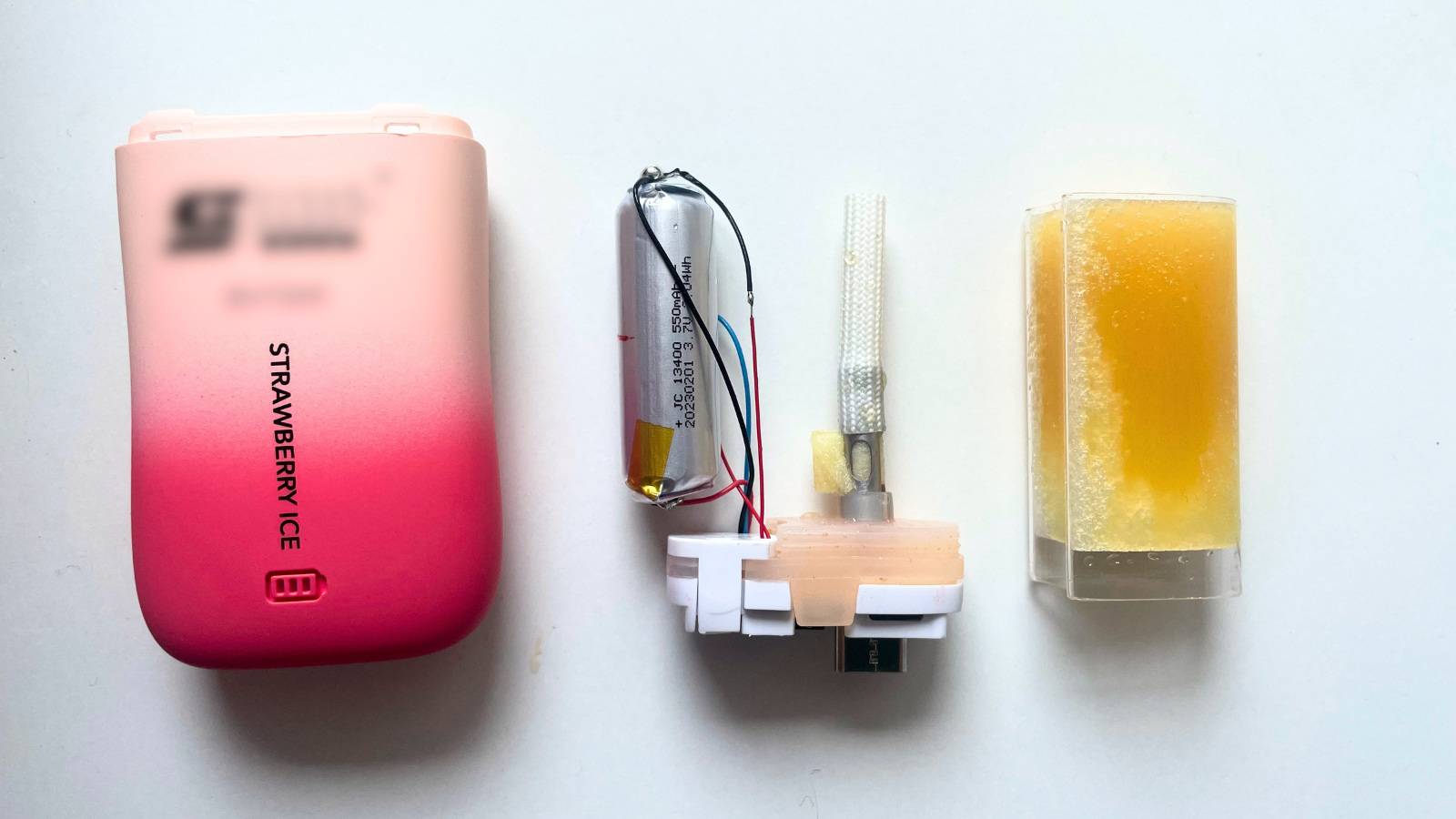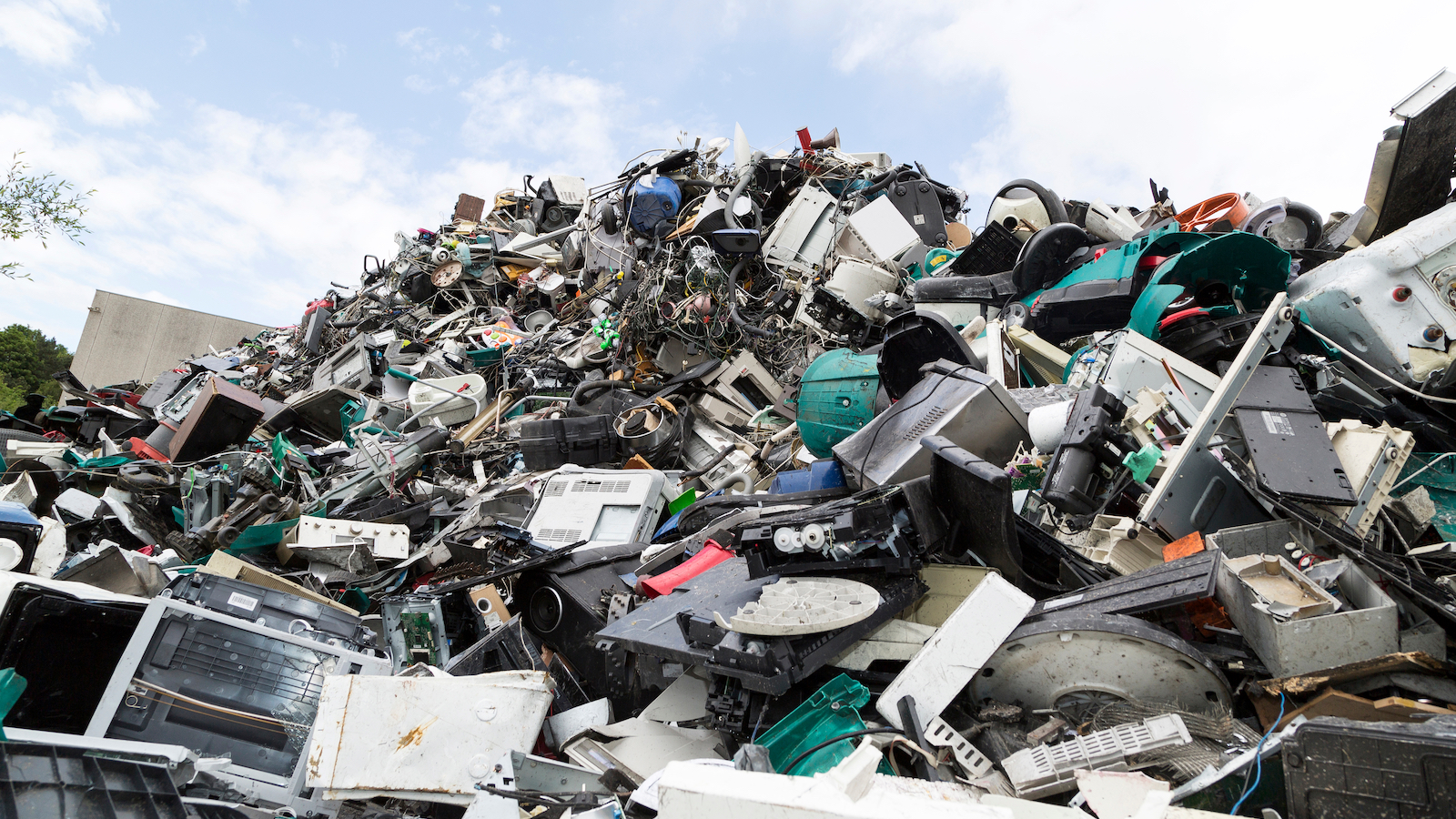
Disposable vapes are creating piles of electronic waste
Retailers illegally sell thousands of disposable vapes every day. Here are four reasons they need to stop.

The last time you stepped into a convenience store, you may have noticed the rack of vapes (or e-cigarettes) ready to be bought, vaped and soon, thrown away.
The proof of vaping’s growing popularity is evident in our landfills and litter. Disposable vape sales are up 196.2% since February 2020 — with nearly 11.9 million vapes sold per month — and Americans are throwing out 4.5 vapes per second.
Each disposable vape device contains nicotine liquid, lithium batteries, heated metal coils and other heavy metals, and it’s all wrapped in a bright, shiny plastic case.
These addictive disposable vapes are adding to our country’s growing electronic waste problem. Here are four reasons why retailers should stop the sale of disposable vapes now.
1. Vapes are designed to become trash
We’re all too familiar with cigarette butts littering outdoor spaces. But with the advent of the e-cigarette, a new form of waste is on the rise. While cigarettes will eventually degrade, disposable vapes are non-biodegradable and they’re designed to be thrown out after a few days of use, with no chance of being recycled.
Traditional cigarettes are no longer the most common type of pollution found on beaches. Vapes are increasingly being found by beach cleanup volunteers and they’re littering streets, parks and waterways too. We’ve gone from bad for worse, and yet companies seem to have no problem selling these toxic products.
Because disposable vapes can’t be reused after the juice runs out, have no standard legal way to be recycled, and can’t even legally be thrown in the trash, they put consumers in an impossible situation. It’s clear that they have no place in a healthy, unpolluted world.
2. Electronic waste is out of control
Electronics waste is the fastest-growing waste stream in the world, and we send 7.6 tons of e-waste to the landfill each year. This kind of waste is especially dangerous to our environment because the heavy metals in electronics can corrode and leach toxic chemicals into our waterways.
Vapes are one of the worst kinds of e-waste. They contain lithium batteries and other toxic materials like mercury and lead. Even the vape liquid is defined by the Environmental Protection Agency (EPA) as an acute hazardous waste.
We don’t have the infrastructure needed to effectively recycle all our electronic waste, and it’s possible we never will. It’s not an option to keep manufacturing, selling, using and tossing disposable electronics in hopes that a solution will come along later.
Disposable vapes are easily the worst kind of e-waste. These products harm our health and pollute the environment. They waste the finite resources needed for manufacturing new technology. They are illegal to sell. The only solution is to stop making them.
3. The lithium in vape batteries could instead power electric vehicles
Vapes use lithium batteries, the same kind of batteries that phones and electric vehicles require. In cars and phones, we recharge them hundreds of times. In vapes, they end up in the trash after a few days. If we stopped wasting the 23.6 tons of lithium contained in disposable vapes, we could create 2,600 batteries for electric vehicles each year.
When used for good, lithium is a precious, finite material that could help power renewable energy. But by wasting lithium batteries in vapes, we damage our chances of achieving a pollution-free future.
4. They’re illegal
How do these products end up in consumers’ hands in the first place? Far too easily, because locations in major retailer networks like 7-Eleven are selling them every day — even though it’s illegal.
The Food and Drug Administration (FDA) has not authorized any disposable vapes for sale, and yet they’re readily available at gas stations and convenience stores.
No electronics that will end up in the trash after only a few days should be this readily available — especially when they are not fit for sale.
The problem is clear: According to CDC Foundation sales estimates, lining up all the disposable vapes sold in a year would stretch for 7,010 miles — long enough to span the continental U.S. twice. Why are we hesitating to enact a solution?
Join us in telling 7-Eleven: It’s time to stop selling disposable vapes.
Topics
Authors
Lucas Gutterman
Director, Designed to Last Campaign, U.S. PIRG Education Fund
Lucas leads PIRG’s Designed to Last campaign, fighting against obsolescence and e-waste and winning concrete policy changes that extend electronic consumer product lifespans and hold manufacturers accountable for forcing upgrades or disposal.
Find Out More

Apple AirPods are designed to die: Here’s what you should know

Why do we replace our laptops every few years?
